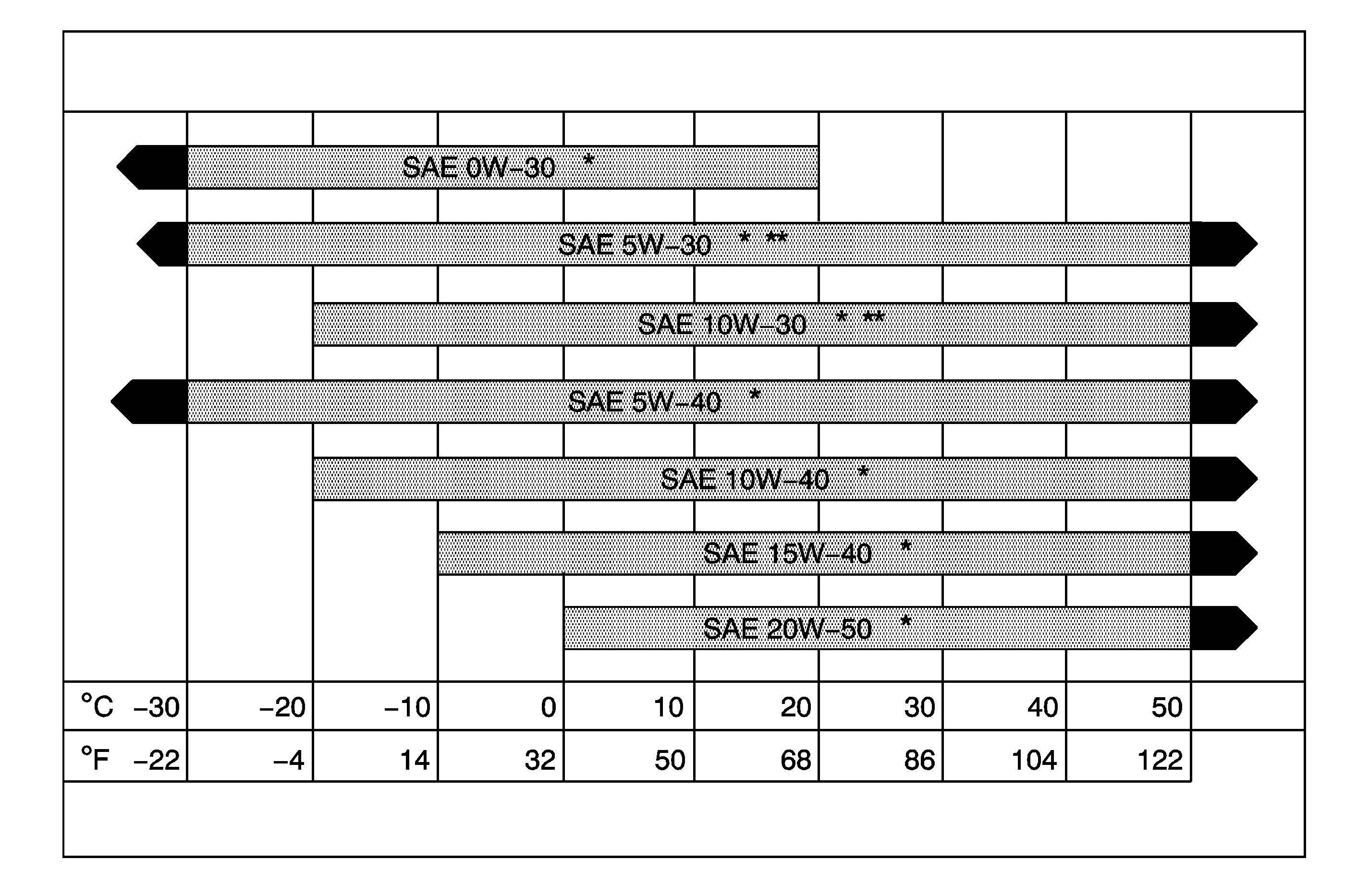Info - Engine Oil Quality and Viscosity (Export Only)

| Subject: | Engine Oil Quality and Viscosity (Export Only) |
| Models: | 1994-2003 GM Vehicles with Gasoline or Diesel Engines Operated in Foreign Countries (Outside the United States and Canada) |
Notice: : Using engine oils of a viscosity other then those viscosities recommended could result in engine damage.
Engine oil viscosity (thickness) has an effect on fuel economy and cold weather operation (starting and oil flow). Lower viscosity engine oils can provide better fuel economy and cold weather performance in colder regions of the world. However, in many regions of the world with higher air temperatures, only higher viscosity engine oils are available. When choosing an engine oil viscosity, consider the air temperature range the vehicle is operating in before the next oil change.
In countries other than the United States and Canada, it may be difficult to find engine oils that display the "API Starburst" symbol certifying the oil for use in gasoline engines. If you are unable to find engine oils displaying the "API Starburst" symbol, use engine oils that meet the API Service "SL" or ACEA A3-02 requirements. Additional engine oil viscosities meeting API Service "SL" or ACEA A3-02 requirements may be used as shown in Figure 1 in accordance with the temperature ranges shown.
In some countries, the majority of the engine oil viscosities shown in Figure 1 may not be available. In those countries, SAE 20W-50 engine oil may be used as long as it meets API Service "SL" or ACEA A3-02 requirements and is used in accordance with the temperature ranges shown.
Figure 1 -- Gasoline Engines

*Engine oil must meet API service SL or ACEA A3-02
**Follow your Owners Manual for the preferred engine oil and oil change interval.
Figure 2 -- Diesel Engines

*If the preferred engine oil is not available, ACEA B3-02, API CH-4 or API CG-4 of the correct viscosity grade should be used. If API CH-4 or API CG-4 oils are used then change the oil and filter every six months or 5000 miles, whichever occurs first.
**Follow your Owners Manual for the preferred engine oil and oil change interval.
